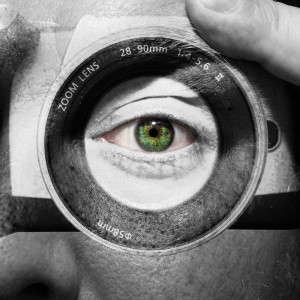What Is POV (Point of View) and How Do You Use It?
 The most common problem I see in aspiring novelists is an inability to grasp the concept of Point of View.
The most common problem I see in aspiring novelists is an inability to grasp the concept of Point of View.
Veteran editor Dave Lambert says, “No decision you make will impact the shape and texture of your story more than your choice of Point of View.”
So what is Point of View, what’s the secret to making it work, and what’s the POV rule you must not break?
Point of View is the perspective from which you tell your story. You may choose to tell it in First Person (I); Second Person (you); or Third Person (he, she, or it).
The secret to making it work is to limit yourself to one perspective character per scene, preferably per chapter, and often per book.
The cardinal rule is to never violate #2—which means no switching perspective characters within the same scene, and definitely not within the same paragraph or sentence. Yes, that happens, and it’s a giant no-no.
Example:
[Third person POV perspective character] Suzie slipped into American History 101, late as usual, wishing Dr. Luck wouldn’t give her his usual scowl, while he wondered if it was possible for her to ever show up on time.
That’s called head-hopping (being in the head of more than one character at time), and here’s what’s wrong with it:
It implies an omniscient viewpoint, which is archaic.
It violates the secret (#2): one POV character per scene.
That single perspective character serves as your camera. Your reader experiences only what that character sees, hears, thinks, feels, smells, and tastes.
How then can your reader learn anything about any other character? From what they say, and what your POV character says/thinks/feels/believes about them.
If Bill is your POV character and you’re writing in the third person, you could not write, “Bill said he was happy for her, but Mary didn’t believe him.”
Why?
Because you know only what your perspective character knows, and Bill cannot say unequivocally what Mary believes. But he can guess.
So you can write, “Bill said he was happy for her, but he could tell Mary didn’t believe him,” or “…but he could tell from the look on her face that Mary didn’t believe him,” or some variation of that.
Multiple Points of View in the Same Story
In some of the Left Behind (Tyndale House Publishers) novels I alternated between as many as five perspective characters per book, but I made it crystal clear every time I switched.
Perhaps I had finished a scene where airline pilot Rayford Steele was the perspective character and found himself caught in a dilemma in London. Now I want to switch locations and perspective characters.
So I would add extra space between paragraphs, insert what’s called a typographical dingbat—like this: ### —and then fully introduce the new POV character:
Meanwhile, in Los Angeles, Buck Williams sat hunched over his laptop…
In my latest novel, The Valley of the Dry Bones (Worthy Publishing)—which releases May 31, 2016—I employ a single perspective character for the entire book.
Primarily, remember that regardless which POV you choose, you’re limited to one perspective character per scene. Period.
What POV will you choose for your work-in-progress, and how many perspective characters will you use?
The post What Is POV (Point of View) and How Do You Use It? appeared first on Jerry Jenkins | Write Your Book.



